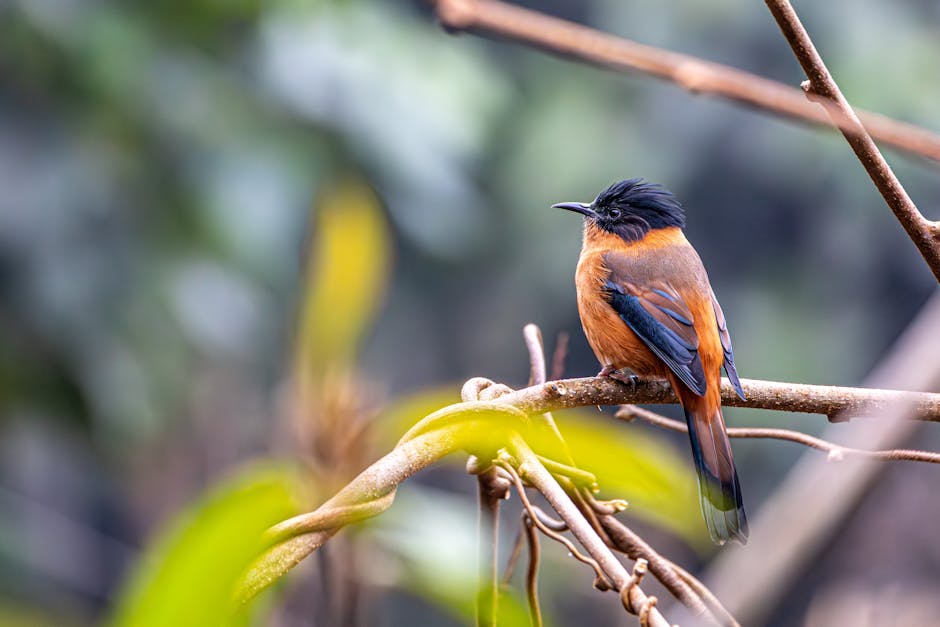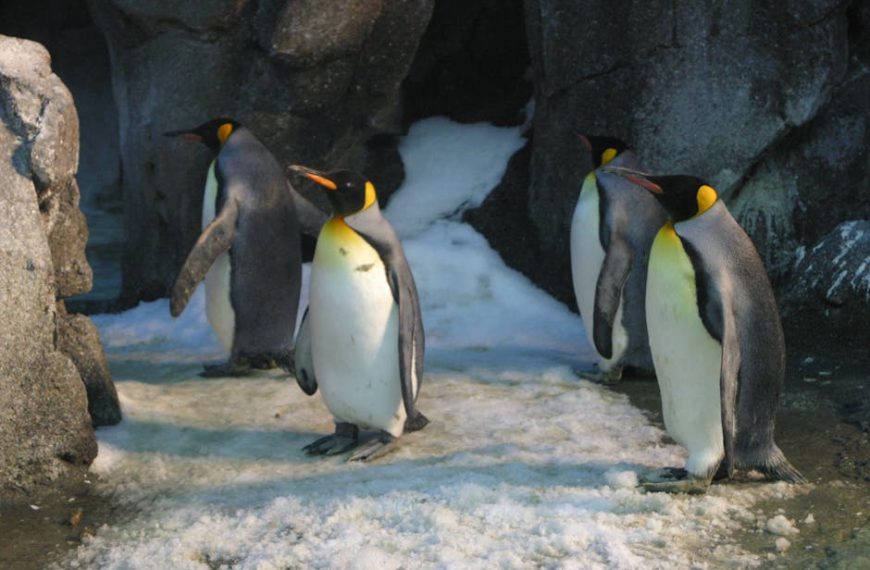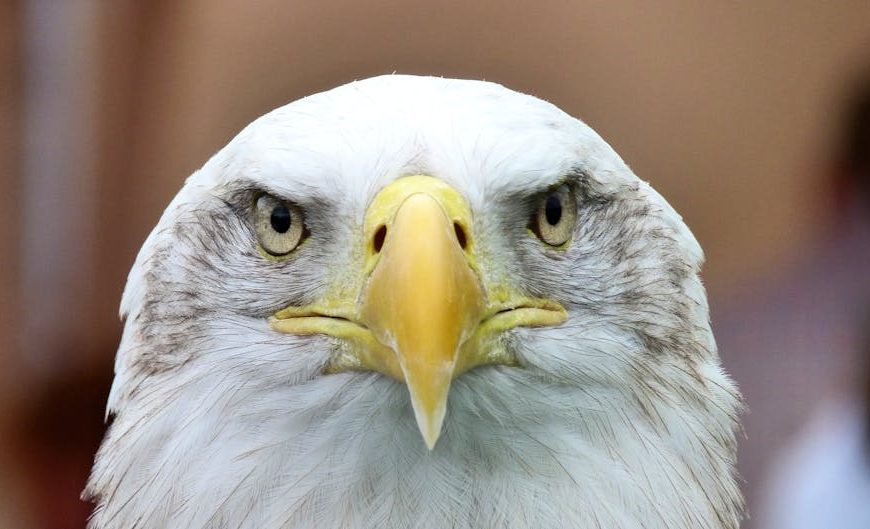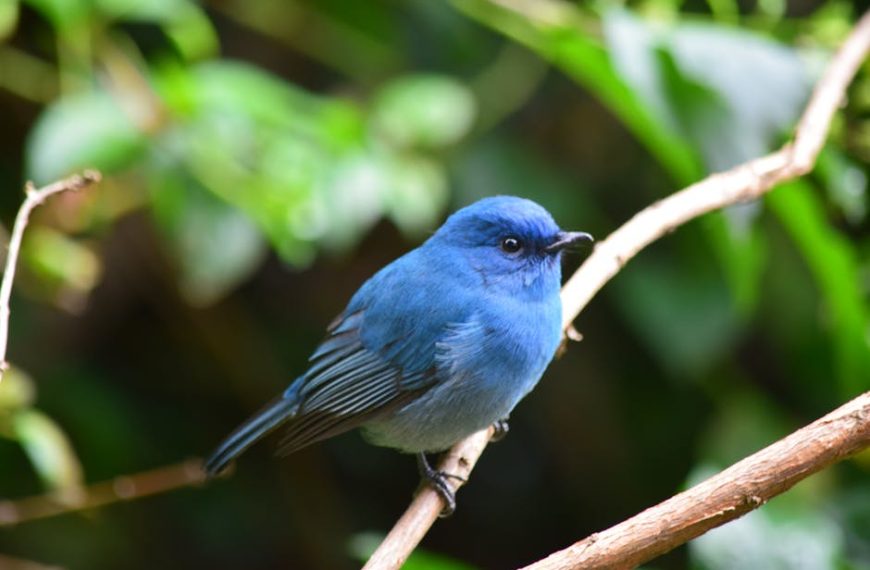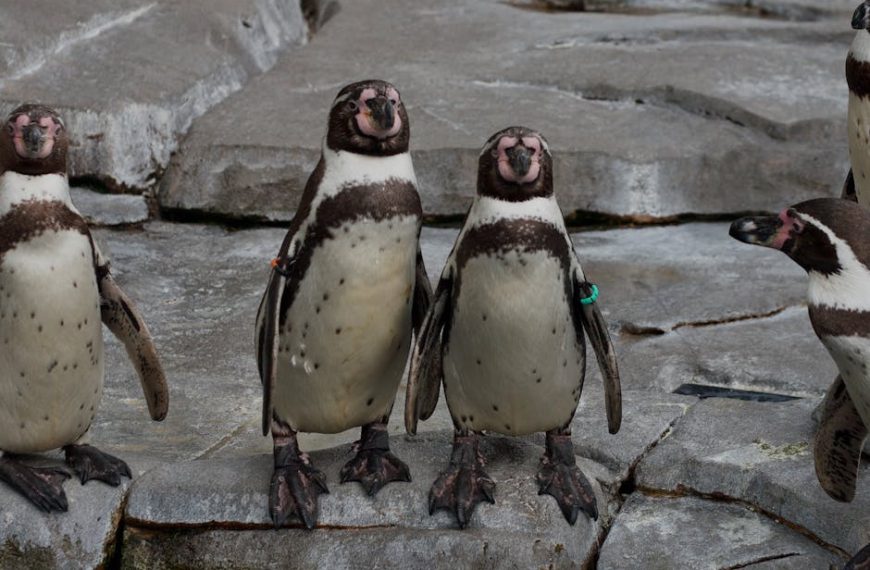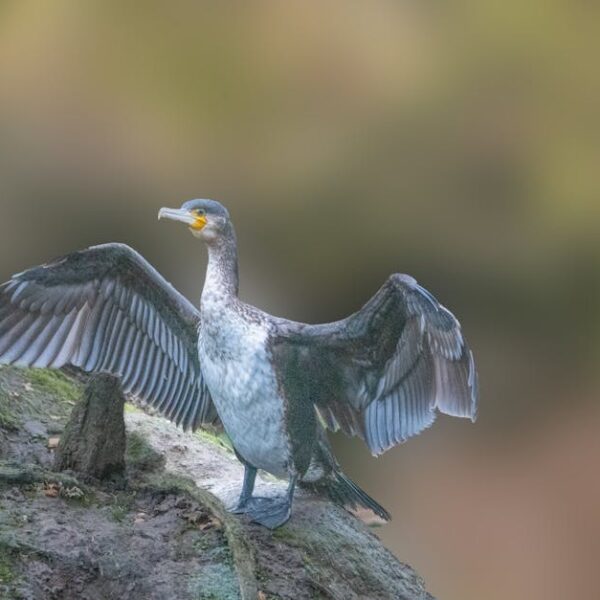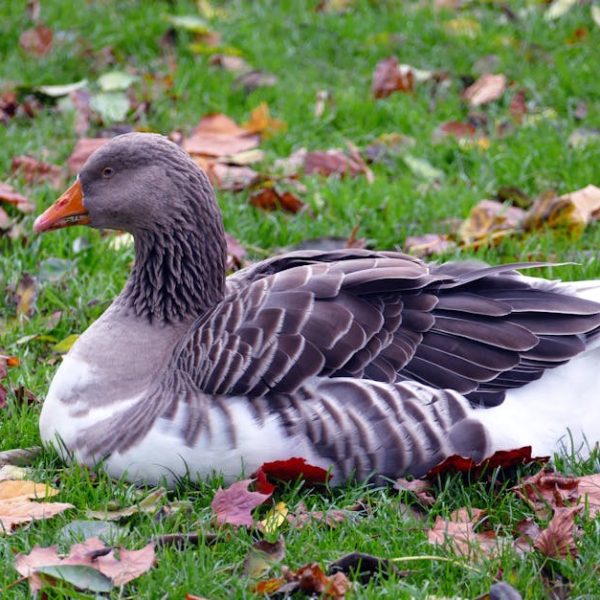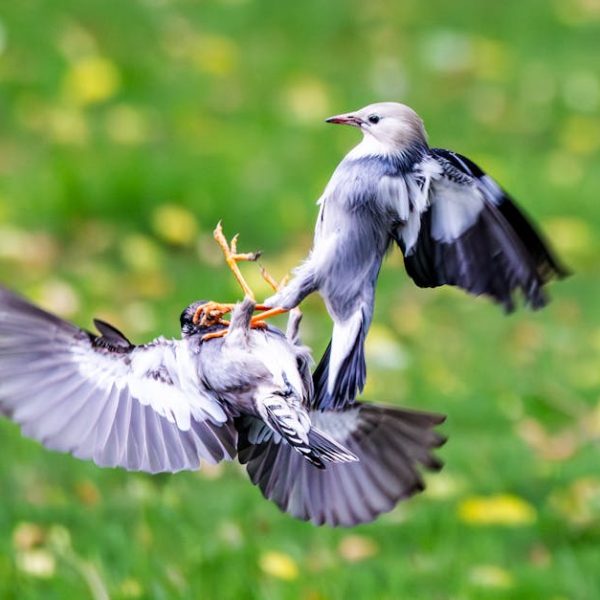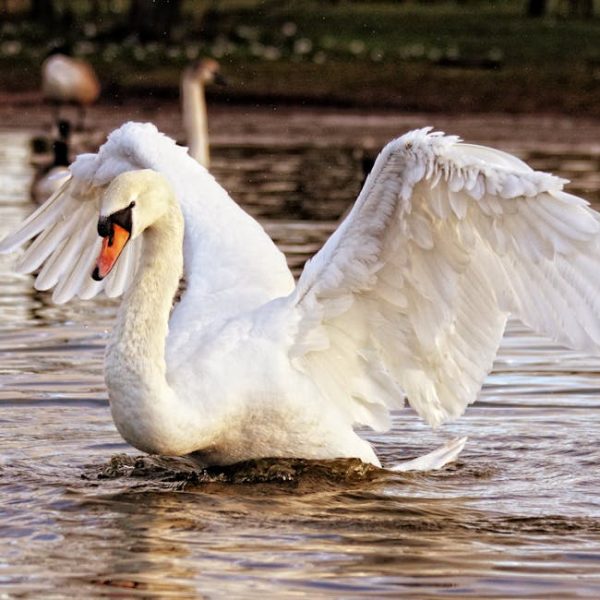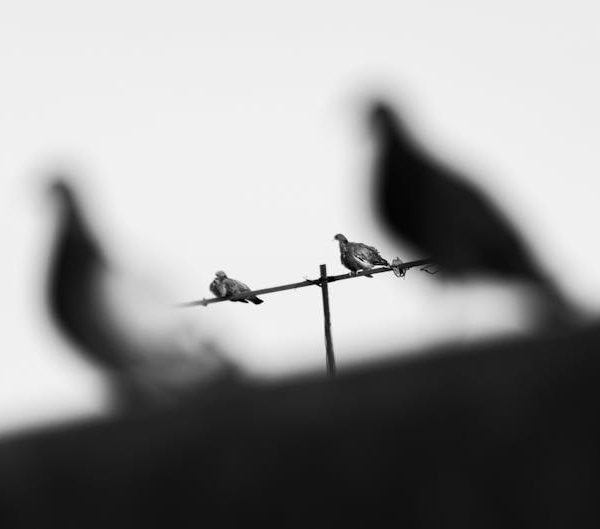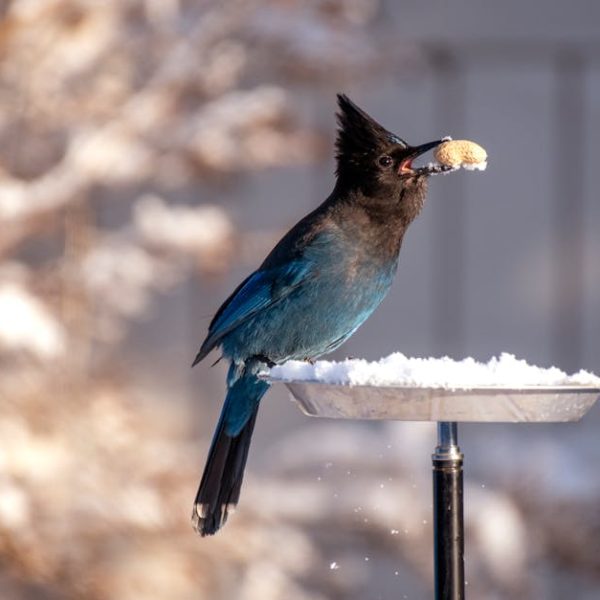In the vast wilderness, countless avians species rule the skies, each with unique physical characteristics that make them a delight to bird watchers or nature enthusiasts. However, a select group of birds don a striking feature that sets them apart—a vibrant orange beak. Bursting with color, these beaks are as beautiful as they are instrumental in the birds’ survival. Let’s dive into the kaleidoscopic world of these fascinating species blessed with this flamboyant attribute.
Flame-Colored Birds: Tucans
Tucans are an embodiment of exotic beauty. They are habitants of South America’s tropical forests, adorned with sizeable elegant bodies that are primarily black in color. But the real allure lies in their over-sized, brilliantly orange beak that naturally turns heads.
- Tucans’ beaks, despite their large size, are surprisingly light, thanks to their internal spongy structure.
- They provide a notable advantage while reaching food inaccessible to other birds and also showcase male prowess during courtship rituals.
- The orange-colored beak is not just a feeding tool. It’s a radiant heat regulator too!
When compared to other avians, the Tucans’ beaks definitely win in the “Oversized And Vibrant” category. It’s large, curved, and roughly one-third of their body length.
Unparalleled Vibrancy: Kingfishers
Kingfishers, a small bird breed, exude remarkable hues from sapphire blue to emerald green, making them like jewels dotting the wilderness. However, among their kaleidoscopic body colors, the most striking detail is their tangerine-colored, dagger-like beak.
- Spotting a kingfisher in the wild is always joyful as they shine brightly against the green foliage.
If you’re keen to spot one, search around bodies of water, such as lakes, rivers, and coastal regions. Kingfishers are swift divers, and their beaks are excellent tools for catching prey.
To unmistakenly identify a Kingfisher:
- Look for vibrant orange-red bills.
- Checkmate azure plumage.
- Size approximately around 16-19 cm.
The Charming Sky Dancer: American Oystercatchers
American Oystercatchers boast a characterful orange bill, a stark contrast to their black and white plumage. Their flamboyant beak isn’t just for show—it’s a powerful tool, tailor-made for prying open their favourite oyster shells.
- Wildlife photographers, remember to focus on their striking bills while in action, capturing the dynamic and fascinating life of these beach dwellers.
For these charismatic birds, the robust beak aids in food foraging but can also be a hindrance—its bright color can easily give away their location to predators.
Let’s continue with more glorious bird species endowed with orange beaks.
Exotic Appearance: Zebra Finch
The Zebra Finch, known for its quizzical, spiky orange beak, is a small, distinctive bird that hails from the grasslands of Australia. Coated in a delicate grey plumage splashed with characteristic zebra-like black stripes and a patch of vibrant red-orange on the cheeks, these birds are a delightful sight to behold.
Unlike other tiny birds, Zebra Finches are instantly recognizable because of their:
- Unique patterned feathers.
- Particularly prominent beak.
- Small size, typically around 10 cm.
Despite their size, these tiny songbirds’ beaks play a crucial role in their survival, especially during courtship and feeding, allowing them to pick up tiny seeds and insects.
Rare Beauty: Rhinoceros Hornbill
Rhinoceros Hornbills, the majestic giants of the orient, are adorned with an impressive orange casque atop their beaks. Native to the dense rainforests of Southeast Asia, this stunning bird showcases an immense bill and magnificent plumage, painted with black and white, contrasting against the faded orange hue of the beak.
- Want to spot a Rhinoceros Hornbill in its natural habitat? Look out for the significant orange casque – there lies the primary distinction among Hornbill species.
The best time and place to sight Rhinoceros Hornbills would be:
- During the early mornings and late afternoons.
- In places like Borneo and Sumatra, during fruiting seasons.
Their heavy-looking beaks, far from being a burden, provide a range of crucial functions from serving as resonating chambers during vocalization to attracting mates and breaking open tough fruits.
In conclusion, these beautiful birds, dressed in radiant orange beaks, capture hearts with their luxurious, vital features. As a birdwatcher or a nature enthusiast, it’s a joy to observe these entrancing species display their stunning array of colors. So step outside, binoculars in hand, and indulge yourself in the natural wonder that is these spectacular creatures.
Key Takeaway:
- Birds with orange beaks, like Tucans, Kingfishers, American Oystercatchers, Zebra Finch, and Rhinoceros Hornbill, are unique with their vibrant, functional attribute.
- These beaks are not just eyecatching but also serve critical roles such as feeding, heat regulation, courtship, and more.
- Differentiating these birds from others is simple with the right knowledge about their habitats, sizes, behaviors, and unique features.
- Understanding these details not only enhances birdwatching experiences but also offers fascinating insights into avian biodiversity.
Birds with bright orange beaks are a striking sight, demonstrating nature’s flamboyant palette. Enriched with the understanding of these birds’ distinct details, from habitat to unique habits, your next birdwatching experience is bound to be more rewarding and exciting! Take some time to appreciate these colorful avians and their fascinating adaptations, as they offer brilliant displays of nature’s creativity and diversity.
FAQs
Q: What are some other bird species known for their colorful beaks?
A: Aside from the ones mentioned, bird species like the Atlantic Puffin, Keel-billed Toucan, and Pelagic Cormorant are also known for their colorful beaks.
Q: Why do birds have colored beaks?
A: The color of a bird’s beak often plays a crucial role in their survival and reproduction. Some use their vibrantly colored bills to attract mates, while others use it as a tool for foraging food or dissipating heat.
Q: Do all birds with orange beaks eat the same type of food?
A: Not necessarily. The bird’s habitat and species greatly influence their diet. While some birds with orange beaks may favor fruits or seeds, others, like the American Oystercatcher, are adept at prying open oyster shells.
Q: Why do only some birds have orange beaks?
A: The color of a bird’s beak can be influenced by various factors, including their diet, species, and habitat. Some birds may develop vibrant orange beaks due to genetic factors or the types of foods they consume.
Q: Can a bird’s beak color change over its lifetime?
A: Yes, some birds do experience changes in their beak color over their lifetime. This can be influenced by factors such as age, breeding season, or changes in diet.
Encourage your friends and family to delve into the fascinating world of birds by sharing this article and exploring more posts on our website.
